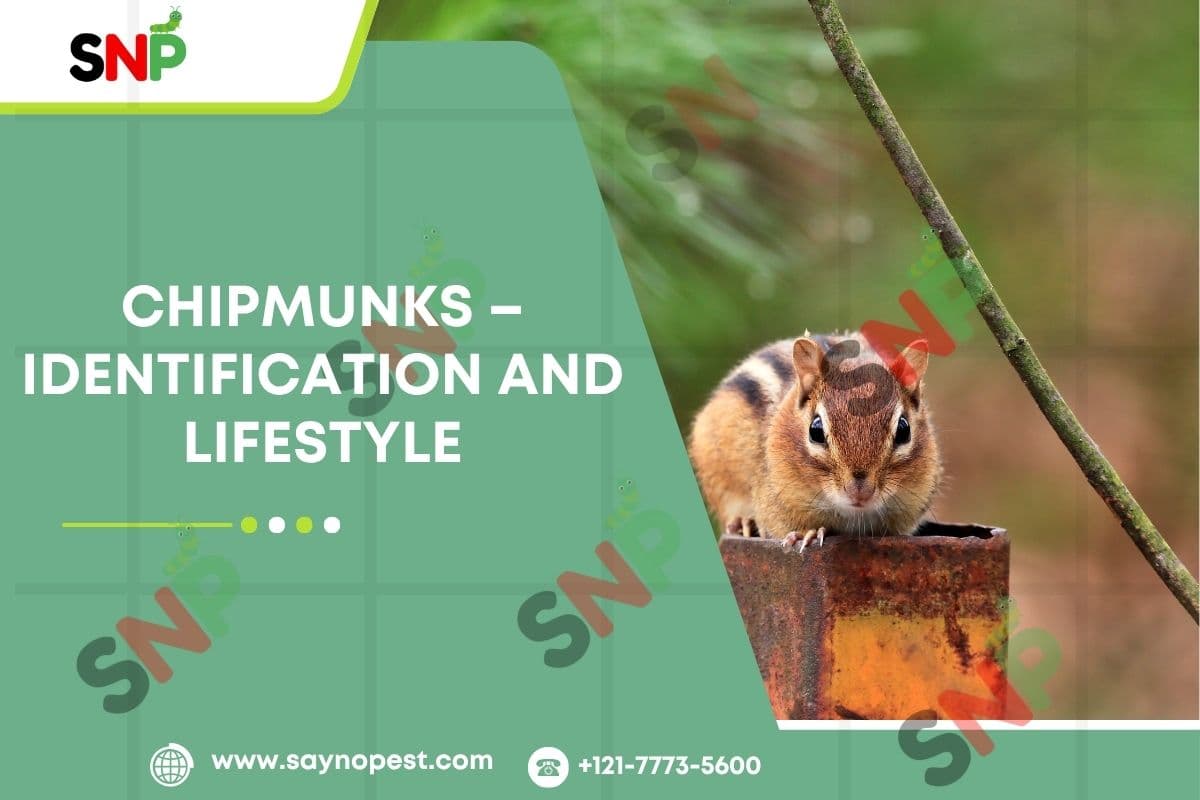Chipmunks: Identification and Lifestyle

Introduction to Chipmunks
Chipmunks are small, energetic ground-dwelling rodents which inhabit forests, gardens, and residential areas all around the United States. They may look cute to many people, but when they dig burrows around houses or when they destroy plants they become a big problem. They may appear harmless initially but cause soil erosion, structural cracks and broken gardens.
This is why it is important to grasp their habits and lifestyle. Identification of their signs at an early stage will help homeowners take preventive measures before the infestation reaches its peak. Chipmunks control services keep the properties of many families around the country safe. To all citizens with recurrent problems, professional Chipmunks control in USA service on reliable sites such as saynopest means a long-lasting satisfaction.
Appearance: How to Identify Chipmunks.
Size: Chipmunks are small rodents with lengths of 6-12 inches including the tails.
Color and Markings: These are reddish-brown in their fur with five dark stripes on the back and face to keep them out of the way of the squirrels.
Cheek Pouches: Cheek pouches have large pouches to transport food to storage burrows.
Movement: They have fast movement, often jerky & with upright tails.
Common Species: The Eastern Chipmunk & Least Chipmunk are commonly found in the U.S.
Clues Outside Homes: Scan the ground around decks or gardens looking to find small burrow holes, seed shells and nut piles.
When infestation is prevented early, it is possible to inhibit infestation, and Chipmunks control services are capable of inspecting and treating the infested areas.
Burrowing Mannerisms The Burrowing Tunnels Under Your Yard.
Chipmunks are diggers in nature. They construct a complicated set of burrows, up to 2030 feet down, with distinct sleeping, food storage, & nesting chambers. These tunnels are usually installed in areas under decks, patios or garden beds, so they are not easily noticed. The entrance holes are not large, perhaps not more than two inches, and are skilfully hidden so that there are no heaps of dirt around them.
Although these underground networks are a home to chipmunks, they can cause severe damage to lawns and structural stability of surrounding buildings. Burrows loosen soil, disrupt root systems of plants and may even cause retaining walls or sidewalks to move over time. This is why Chipmunks control services are necessary to home owners who observe abnormal digging habits. In the USA, professional technicians control inhumane practices by humane means to block and remove these tunnels without damaging other wildlife.
Diet: What Do Chipmunks Eat?
Consumer food: They consume plant and animal food, and are opportunistic eaters.
Foods: Seeds, nuts, grains, fruits, berries, mushrooms & garden vegetables.
Intake of protein : They also feed on small insects, worms and occasionally bird eggs.
Food storage: Chipmunks hoard food gathered in their cheek-bags and bury it in holes to survive winter.
Effects on Homes: They forage and damage gardens, bird feeders, and stored grains.
When Chipmunks begin to invade garden beds or outside pantries, homeowners usually call Chipmunks control services.
Prevention measures that can make chipmunks unwelcome to human activity is facilitated by the sureness of reliant Chipmunks control in USA.
What are the characteristics between Chipmunks and Squirrels?
They are similar like rodents but their behavior and appearance are different. Chipmunks nest in burrows as well, but the squirrels nest in trees and on high grounds.
The other change lies in their lifestyles: the chipmunks are ground tributaries collecting nuts and seeds on the ground, as compared to the squirrels who typically climb trees to find acorns or fruit. Due to these minute differences, house owners at times confuse one with the other. The employment of Chipmunks control services aid in the confirmation of the species causing the problem so that the appropriate solution can be administered.
Conclusion – learn to control Chipmunks
Before it becomes too late and they have caused havoc in your yard and foundation, chipmunks may appear cute and innocent. This information on the look, burrowing behavior and feeding can assist the homeowners to observe the signs of activity and to take action before the issue spirals out of control.
The best and safest way to control infestations of chipmunks is to hire professional Chipmunks control services since they can inspect, remove, and prevent the infestations without damaging the environment. Homeowners in USA through saynopest prefer Chipmunks control in USA as their preferred choice to keep their homes and gardens safe of undesired wildlife.
Related Posts
Chipmunk Traps Made Simple: How to Protect Your Yard
Chipmunks are small creatures who are known to fight homeowners all over the United States in their yards and gardens. Adorable looking at a distance, these tiny rodents can dig trenches beneath patios, chew light bulbs and power wires, and steal bird feeders. It is at that point that chipmunk traps become a serious consideration. […]
What Do Chipmunks Eat? A Complete Guide to Diet, Habits
Chipmunks are active and inquisitive rodents that inhabit the United States, and to successfully control pests and wildlife, it is important to understand their eating patterns. This blog discusses what do chipmunks eat, their wild food, concealment behaviors, traps, their life span, and how they seek shelter in residential places. Everything is legitimate, researched, and […]
Quick Link
Services
